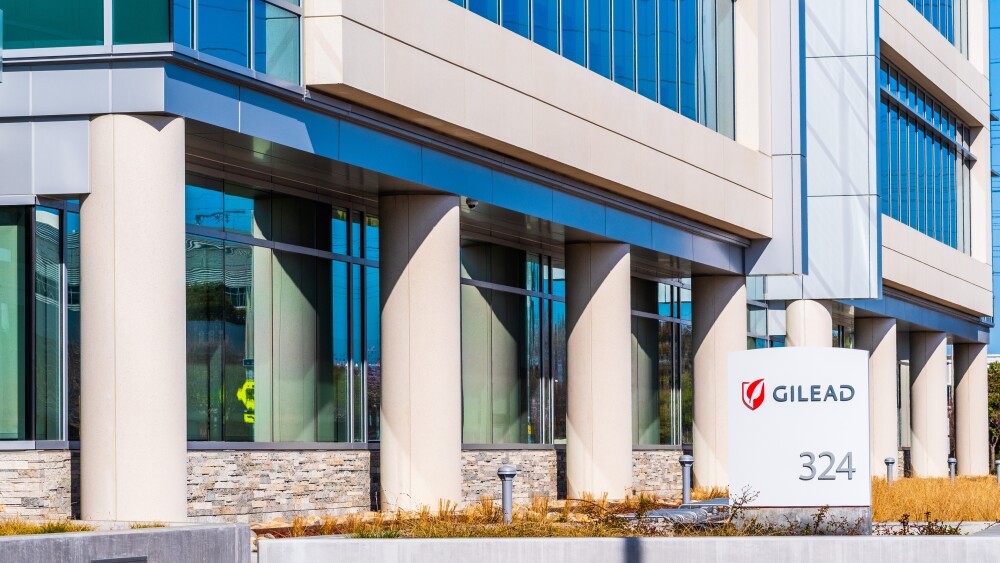These data were presented as a scientific poster at the 62nd Annual Meeting of the American Association for the Study of Liver Diseases (AASLD) in San Francisco, California. Worldwide regulatory submissions are planned to be filed with RAD001 for the prevention of organ rejection in adult liver transplant patients by the end of 2011.
The study met the co-primary endpoints from the original protocol, which were composite efficacy failure and renal function measured by estimated glomerular filtration rate (eGFR) based on the four-variable Modification of Diet in Renal Disease (MDRD4) equation at 12 months after liver transplantation. In this analysis, composite efficacy failure was defined as graft loss, death or lost-to-follow-up1. The study protocol was amended when a third treatment arm was discontinued early (tacrolimus withdrawal arm). In the amended analysis, RAD001 with reduced tacrolimus met both the primary and key secondary endpoints.
The composite efficacy failure rate in the RAD001 plus reduced-exposure tacrolimus group was lower compared to the control group at month 12, and showed non-inferiority [difference of -0.9%; 97.5% CI (-7.3% to 5.5%) against the non-inferiority margin of 10%]1. On the co-primary endpoint of renal function, RAD001 plus reduced tacrolimus showed improved renal function one month after starting RAD001 and sustained improvement to month 12 (adjusted mean difference in eGFR change for RAD001 plus reduced tacrolimus versus tacrolimus control was +8.50±2.12 mL/min/1.73m2; p<0.001)1. At month 12, eGFR was significantly better in the RAD001 plus reduced tacrolimus arm of the study compared to the standard tacrolimus control arm (80.9 mL/min/1.73m2 vs. 70.3 mL/min/1.73m2; p<0.001)1.
“Chronic renal failure associated with standard-of-care calcineurin inhibitor use is a leading cause of patient morbidity following liver transplantation. Many liver transplant patients will develop chronic damage to the kidneys, in some cases ending up on dialysis, so immunosuppressive strategies that protect renal function are urgently needed,” said John Fung, M.D., Ph.D., director, Transplantation Center, Cleveland Clinic Foundation, Cleveland, Ohio. “The results of this study are exciting, as the introduction of RAD001 just one month after liver transplantation allowed for a reduction of the calcineurin inhibitor tacrolimus, and showed non-inferior efficacy and better renal function compared to standard exposure tacrolimus at 12 months.”
Liver transplantation is an area of medicine where significant unmet needs exist. Aside from hepatitis C patients, liver transplant patients are more resilient to acute rejection, but they may be more susceptible to over-immunosuppression and the effects of immunosuppressant therapy on renal function3,4. Up to 60% of long-term liver transplant patients may develop chronic kidney disease5. Additionally, nearly one in five patients may develop chronic renal failure five years post-transplant, which may result in the need for dialysis or a kidney transplant2.
“For more than 25 years, Novartis has led the research and development of transplant medicines that prevent rejection of the transplanted organ,” said Usman Azam, MD, head of U.S. Medical & Drug Regulatory Affairs, Novartis Pharmaceuticals Corporation. “These results with RAD001 represent a potential for a new immunosuppressive strategy that underscores our ongoing commitment to maintaining the graft and also supporting the overall health of the patient.”
Additional data from this trial will be presented at medical congresses in 2012.
Study Details
RAD001 Plus Reduced-Dose Tacrolimus: 12-Month Results1
These 12-month results are the first analysis from a 24-month, Phase III, multicenter, open-label, randomized study conducted in 719 de novo liver transplant patients. Following liver transplantation and a 30-day run-in period with tacrolimus (with or without mycophenolate mofetil), patients were randomized to one of three groups: RAD001 (C0 3-8ng/mL) plus reduced-exposure tacrolimus (C0 3-5ng/mL) (n=245), RAD001 (C0 6-10ng/mL) with tacrolimus withdrawal at four months (n=231) or standard exposure tacrolimus (C0 6-10ng/mL) only (control, n=243); all arms included corticosteroids. Enrollment into the RAD001 with tacrolimus withdrawal arm was prematurely halted due to a higher incidence of treated biopsy-proven acute rejection (tBPAR) episodes and adverse events leading to treatment discontinuation (45 events), clustered around the time of tacrolimus elimination (at four months post randomization).
When enrollment into the RAD001 with tacrolimus withdrawal arm was discontinued, the study protocol was amended. The original study protocol included two co-primary endpoints, which were composite efficacy failure and renal function measured by eGFR based on the MDRD4 equation at 12 months after liver transplantation. In the original study protocol, composite efficacy failure was defined as graft loss, death or lost-to-follow-up. In the amended protocol, the primary endpoint of composite efficacy failure at 12 months was defined as tBPAR, graft loss or death. In this amended analysis, the composite efficacy failure rate in the RAD001 plus reduced-exposure tacrolimus group was lower compared to the control group at month 12 (6.7% vs. 9.7%, respectively), and showed non-inferiority (against the non-inferiority margin of 12%) with -3.0% [97.5 CI (-8.7%, 2.6%)] in favor of the RAD001 plus reduced-exposure tacrolimus group (p<0.001 for non-inferiority). In addition, the amended protocol included renal function as a key secondary objective, as measured by eGFR based on the MDRD4 equation at 12 months after liver transplantation, and that endpoint was achieved.
The most common adverse events for the RAD001 and tacrolimus groups (incidence =20%) reported by the study authors were: blood and lymphatic disorders; gastrointestinal disorders; general disorders and administration site conditions; infections and infestations; injury, poisoning and procedural complications; investigations; metabolism and nutrition disorders; musculoskeletal and connective tissue disorders; nervous system disorders; renal and urinary disorders; respiratory, thoracic and mediastinal disorders; skin and subcutaneous disorders; and vascular disorders. The tacrolimus control arm also included hepatobiliary disorders as a common adverse event. Rates of discontinuation of study medication were similar for the RAD001 plus reduced-exposure tacrolimus group (26.9%) compared to the tacrolimus control group (22.2%). One case of hepatic artery thrombosis was reported in the RAD001 plus reduced-exposure tacrolimus group. The event was a second occurrence in a patient who experienced a hepatic artery thrombosis during the run-in period prior to randomization. The overall safety findings of RAD001 were comparable and consistent with previous RAD001 studies in solid organ transplantation.
About RAD001 (everolimus)
RAD001 (everolimus) is approved in the U.S. under the trade name Zortress®, and is indicated for use following kidney transplantation. Outside of the U.S., everolimus is approved under the trade name Certican® for use following heart and kidney transplantation.
Everolimus is also available from Novartis in different dosage strengths and for different uses in non-transplant patient populations under the brand names Afinitor® and Votubia®. It is also exclusively licensed to Abbott and sublicensed to Boston Scientific for use in drug-eluting stents.
Not all indications are available in every country. As an investigational compound, the safety and efficacy profile of everolimus has not yet been established outside the approved indications. Because of the uncertainty of clinical trials, there is no guarantee that everolimus will become commercially available for additional indications anywhere else in the world.
Disclaimer
The foregoing release contains forward-looking statements that can be identified by terminology such as “planned,” “promising,” “will,” “potential,” “commitment,” or similar expressions, or by express or implied discussions regarding potential new indications or labeling for RAD001 or regarding potential future revenues from RAD001. You should not place undue reliance on these statements. Such forward-looking statements reflect the current views of management regarding future events, and involve known and unknown risks, uncertainties and other factors that may cause actual results with RAD001 to be materially different from any future results, performance or achievements expressed or implied by such statements. There can be no guarantee that RAD001 will be approved for any additional indications or labeling in any market, or at any particular time. Nor can there be any guarantee that RAD001 will achieve any particular levels of revenue in the future. In particular, management’s expectations regarding RAD001 could be affected by, among other things, unexpected regulatory actions or delays or government regulation generally; unexpected clinical trial results, including unexpected new clinical data and unexpected additional analysis of existing clinical data; the company’s ability to obtain or maintain patent or other proprietary intellectual property protection; competition in general; government, industry and general public pricing pressures; unexpected manufacturing issues; the impact that the foregoing factors could have on the values attributed to the Novartis Group's assets and liabilities as recorded in the Group's consolidated balance sheet, and other risks and factors referred to in Novartis AG’s current Form 20-F on file with the US Securities and Exchange Commission. Should one or more of these risks or uncertainties materialize, or should underlying assumptions prove incorrect, actual results may vary materially from those anticipated, believed, estimated or expected. Novartis is providing the information in this press release as of this date and does not undertake any obligation to update any forward-looking statements contained in this press release as a result of new information, future events or otherwise.
About Novartis
Novartis Pharmaceuticals Corporation researches, develops, manufactures and markets innovative prescription drugs used to treat a number of diseases and conditions, including cardiovascular, dermatological, central nervous system, bone disease, cancer, organ transplantation, psychiatry, infectious disease and respiratory. The company's mission is to improve people's lives by pioneering novel healthcare solutions.
Located in East Hanover, New Jersey, Novartis Pharmaceuticals Corporation is an affiliate of Novartis AG, which provides healthcare solutions that address the evolving needs of patients and societies. Focused solely on healthcare, Novartis offers a diversified portfolio to best meet these needs: innovative medicines, eye care, cost-saving generic pharmaceuticals, consumer health products, preventive vaccines and diagnostic tools. Novartis is the only company with leading positions in these areas. In 2010, the Group’s continuing operations achieved net sales of USD 50.6 billion, while approximately USD 9.1 billion (USD 8.1 billion excluding impairment and amortization charges) was invested in R&D throughout the Group. Headquartered in Basel, Switzerland, Novartis Group companies employ approximately 121,000 full-time-equivalent associates and operate in more than 140 countries around the world. For more information, please visit http://www.novartis.com.
Novartis is on Twitter. Sign up to follow @Novartis at http://twitter.com/novartis.
References
1. Saliba, F., De Simone, P., Nevens, F., et al. “Efficacy and safety of everolimus with early reduction or elimination of tacrolimus in 719 de novo liver transplant recipients: 12 month results of a phase III, randomized, controlled study.” Presented at the 62nd Annual Meeting of the American Association for the Stud of Liver Diseases; November 4-8, 2011; San Francisco, CA, USA. Poster LB-7.
2. Ojo, A., Held, P., Port, F., et al. Chronic Renal Failure after Transplantation of a Nonrenal Organ. The New England Journal of Medicine. 2003;349:931-940.
3. Devlin, J., Doherty, D. Thomson, L., et al. Defining the Outcome of Immunosuppression Withdrawal After Liver Transplantation. Hepatology. 2003:27;926-933.
4. Fairbanks, K., Eustace, J., Fine, D., et al. Renal Function Improves in Liver Transplant Recipients When Switched From a Calcineurin Inhibitor to Sirolimus. Liver Transplantation. 2003:9;1079-1085.
5. Gonwa, T., McBride, M., Mai, M. Kidney Transplantation After Previous Liver Transplantation. Transplantation. 2011:92;31-35.
Novartis Media Relations
Julie Masow
Novartis Corporation
+1 212 830 2465 (direct)
+1 862 579 8456 (mobile)
julie.masow@novartis.com
Anna Frable
Novartis Communications
+1 862 778 5388 (direct)
+1 732 673 5262 (mobile)
anna.frable@novartis.com
e-mail: us.mediarelations@novartis.com




